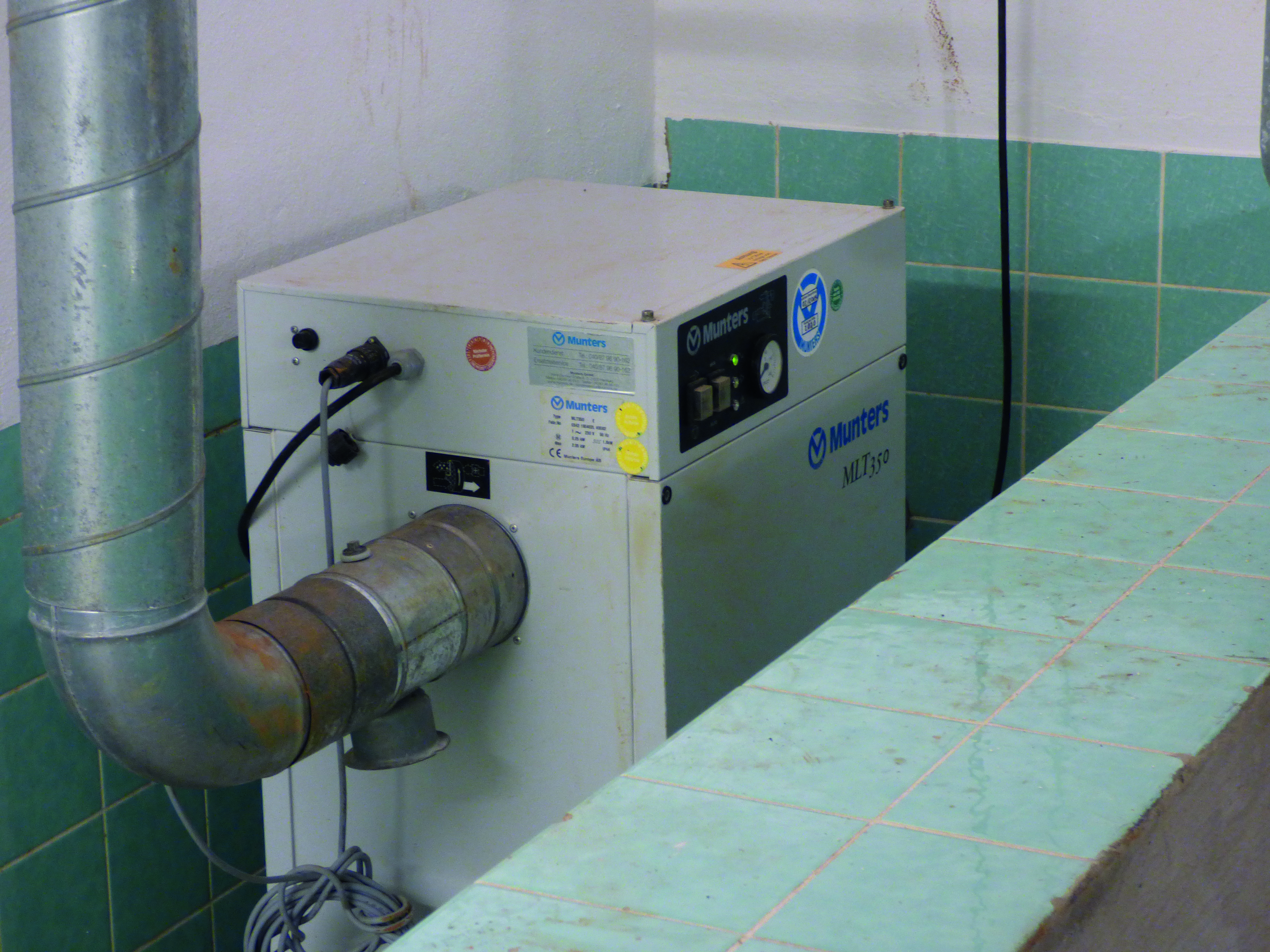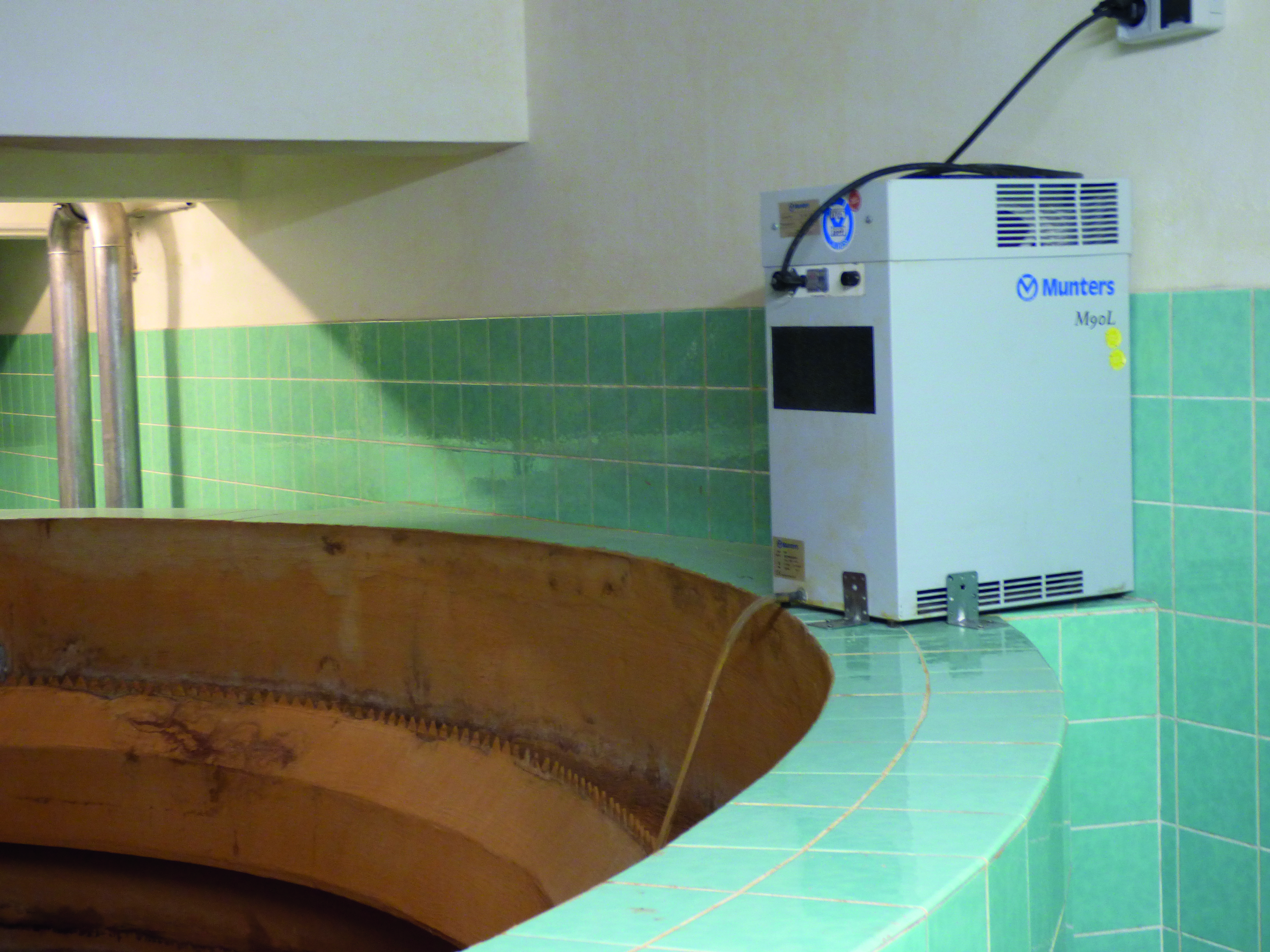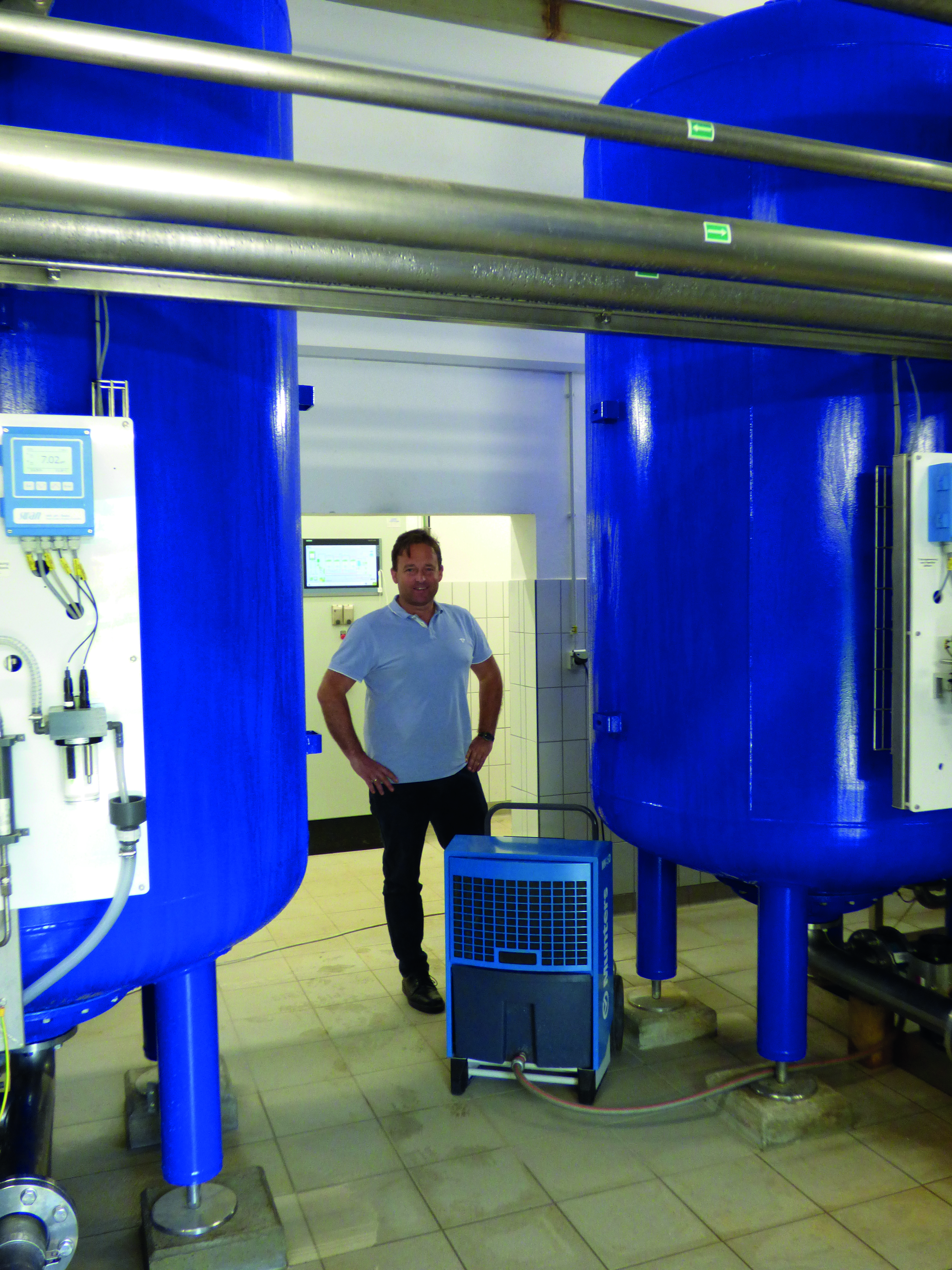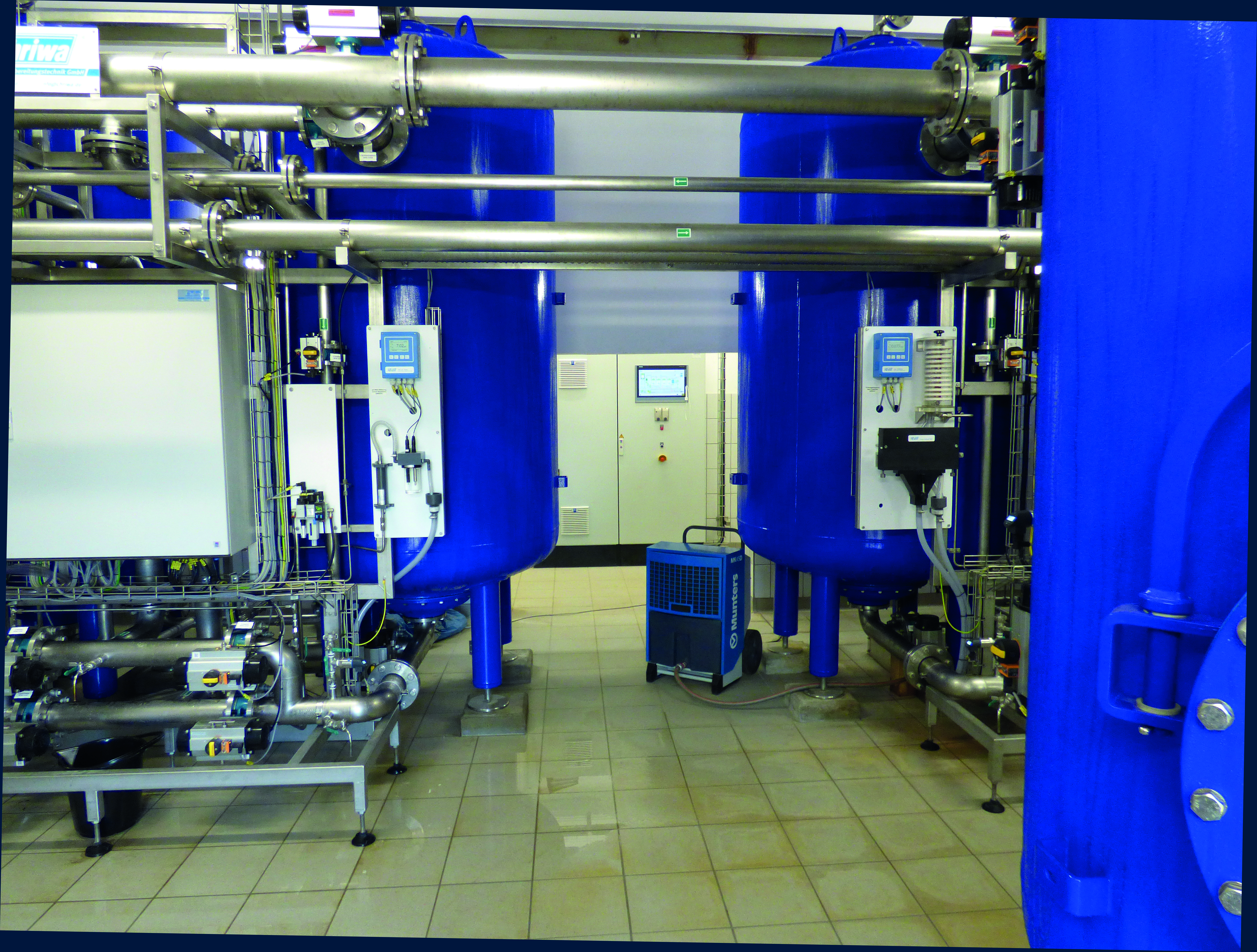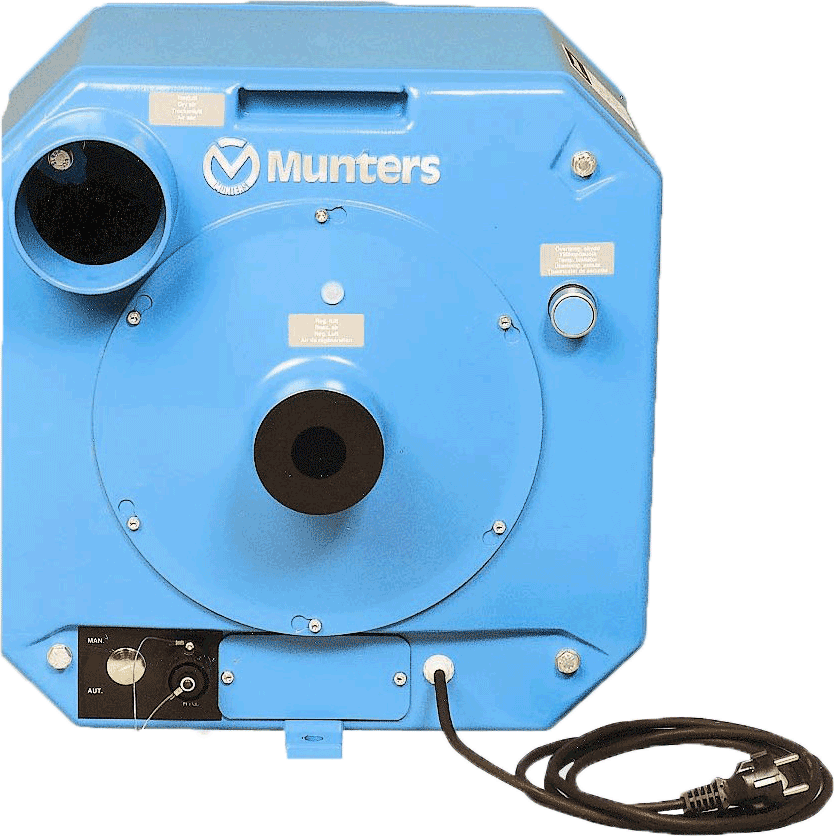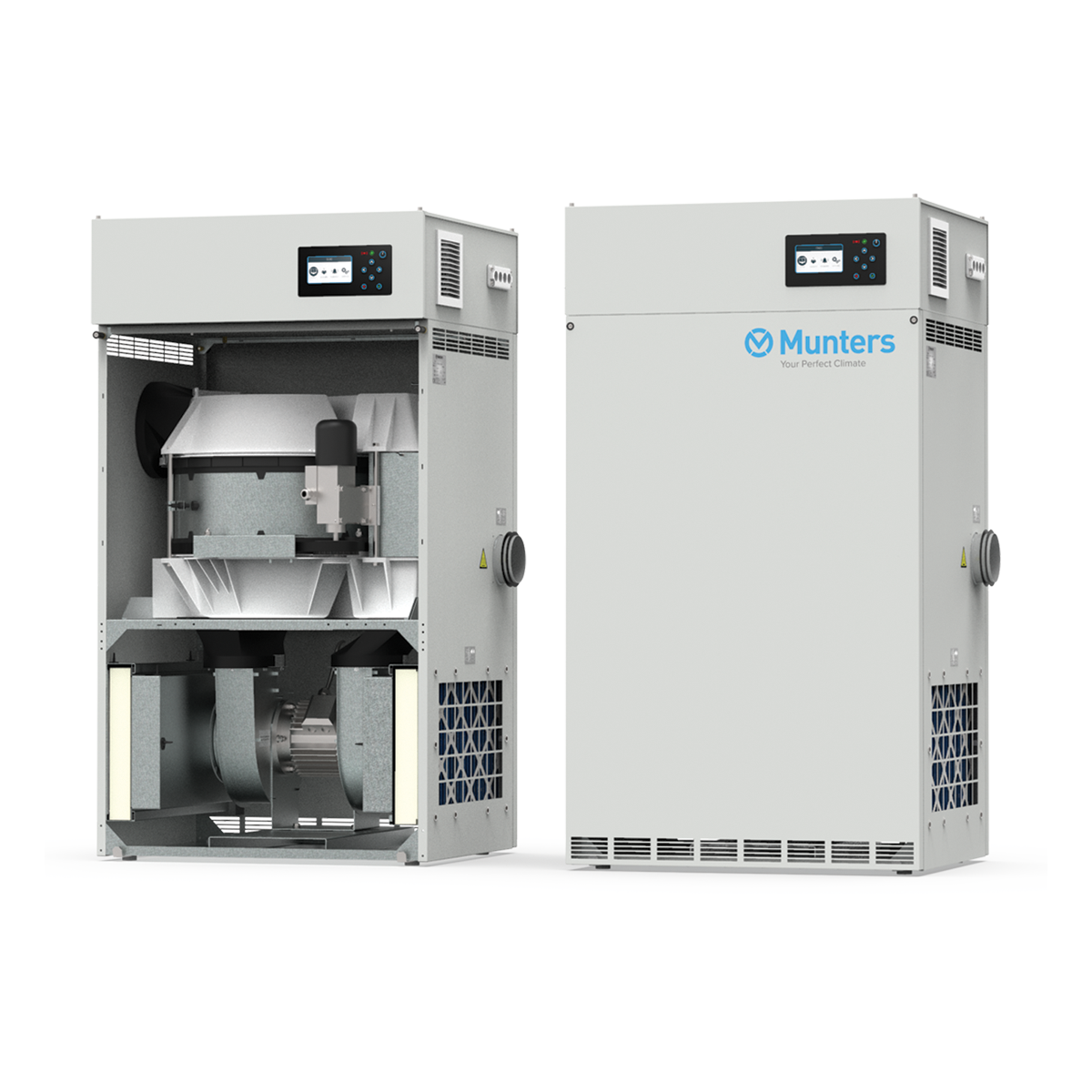The water procurement association Osnabrück Süd (WbV-Os-Süd) operates a total of 24 wells and five waterworks. Via a transport network of around 160 km of pipelines, 22 elevated tanks, and pumping stations, the association supplies around 4.9 million m³ of drinking water to the eleven member communities and cities. In the waterworks, naturally occurring iron and manganese is removed from the well-sourced drinking water by means of a process modelled on nature. Both metals are removed in order to comply with the limits of the „Trinkwasserverordnung“ (Drinking Water Ordinance). They would also colour the water brown and lead to unsightly deposits on the drinking water pipes, tiles and fittings.
Kjappe fakta
- Protection of metallic components against corrosion
- Protection of the building structure against condensation-related moisture damage
- Prevention of mould growth
- Prevention of re-infection of drinking water
- Reduced maintenance and repair costs
Adsorption dehumidification at the Alt-Georgsmarienhütte waterworks The Alt-Georgsmarienhütte water extraction area is a small area and comprises two wells in which the first coarse materials are already filtered out in the gravel filter area. By means of underwater pumps, the raw water is pumped to the Alt-Georgsmarienhütte waterworks and processed there. In a first process stage (oxidation), oxygen is brought into contact with the raw water in an atomising chamber in order to facilitate the precipitation of iron components in the raw water. In the second process stage, the precipitated iron is filtered out in an open basin using a range of various gravel packing procedures. Two demanganisation and deacidification tanks are located downstream. After this treatment, the water is in a lime/carbonic acid equilibrium. All raw water is treated naturally; no chlorine is needed for disinfection. After these cleaning stages, the pure water is temporarily stored in a storage tank (250 m³). The water is then pumped to the elevated tanks at Tannenkamp and Rehlberg by means of centrifugal pumps, and distributed from there to the Alt-Georgsmarienhütte network. Two different adsorption dehumidifiers from Munters (type M90L and MLT350) are used in the Alt-Georgsmarienhütte waterworks. In contrast to dehumidification by condensation (refrigerant dehumidification), sorption technology can achieve high dehumidification capacities even at low air and component temperatures, thus reaching the relative ambient air humidity required for condensation and corrosion prevention more reliably. The desiccant dehumidifiers from Munters have proven themselves, particularly in the case of open water areas that are always accompanied by low temperatures for drinking water treatment. The devices also have a log service life despite this less than ideal environment. Mobile refrigerant dehumidification at the Hagen waterwork The waterworks in the municipality of Hagen were taken over by WbV-Os-Süd at the beginning of 2019 and the systems were renovated as part of the takeover. Even in a modern new building, such as the waterworks in Hagen, humidity loads and therefore condensation on cold components such as filters, pipelines, etc. cannot be avoided from a structural perspective. To protect the new technology from corrosion and the electrical control system from failure, the water procurement association relies on the Munters MK Series refrigerant dehumidifiers.
Kjappe fakta
- Protection of metallic components against corrosion
- Protection of the building structure against condensation-related moisture damage
- Prevention of mould growth
- Prevention of re-infection of drinking water
- Reduced maintenance and repair costs
